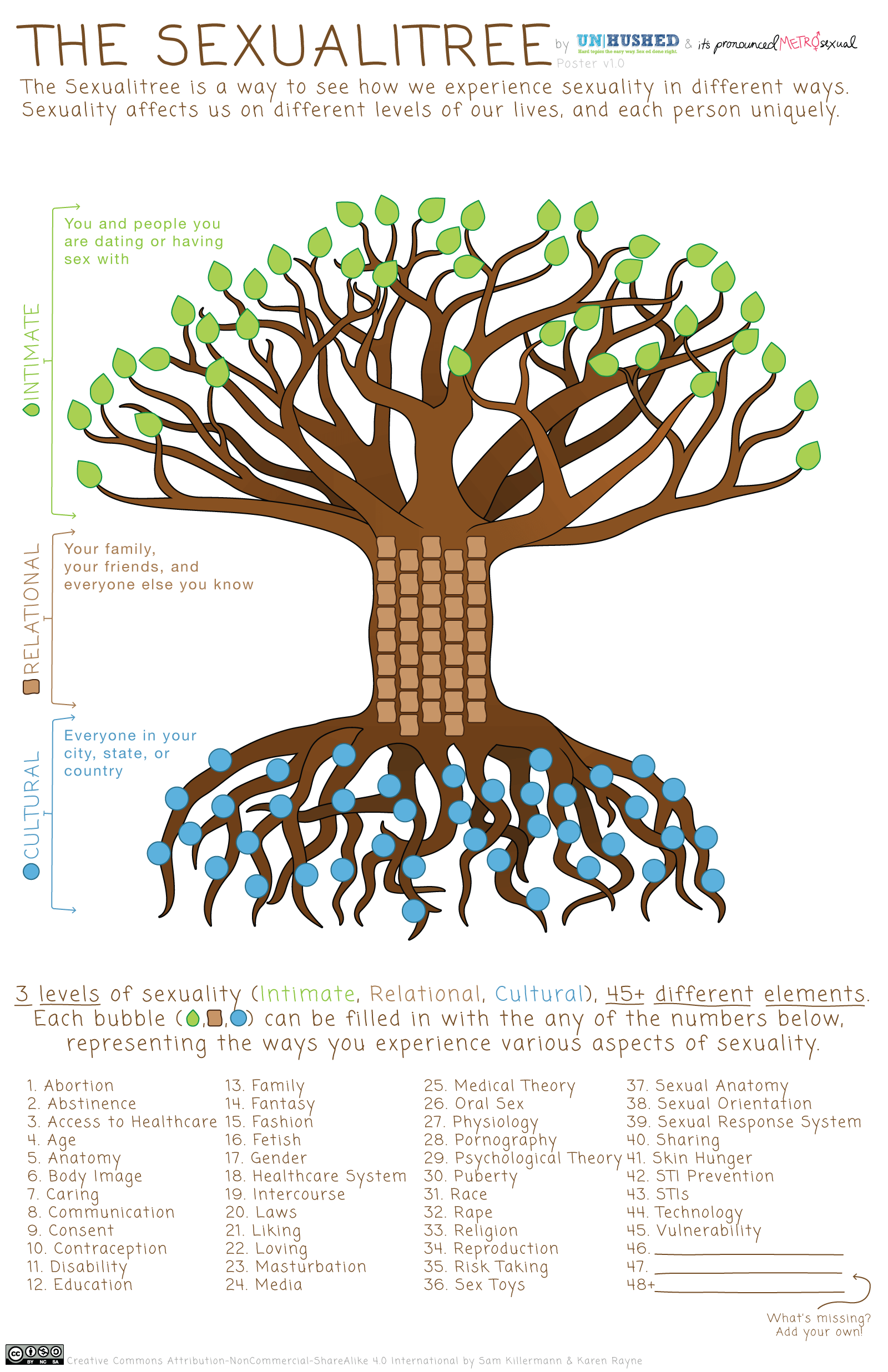Sexuality is a touchy subject. For example, just that opening joke might have been enough to turn someone off (I could go all day. But I won’t.). As easy as it is to make awkward puns, or be uncomfortable in general talking about sexuality, it’s an important subject that affects all of us on different levels of our lives.
So, to get to the root of what we mean when we say “sexuality,” I’m happy to introduce you to the Sexualitree. (Also, I promise I’m done with the puns. I. Can. Resist.)
The Sexualitree is a model that can help us see the different ways we experience (or don’t experience) sexuality. Sexuality is something that affects us all on different levels, and something we experience personally, individually, and uniquely. To understand how this works, it’s helpful to unpack the three distinct levels (intimate, relational, and cultural) that the myriad elements of sexuality (e.g., abstinence, body image, and consent, to name a few) affect us on — we’ll dig into all of this shortly, but first a little background.
This model, pictured above and explained below, is something that’s been in the works for quite awhile, and is a heart-and-brain offering from me and Dr. Karen Rayne (of Unhushed, and author of Breaking the Hush Factor: 10 Rules for Talking with Teens About Sex). You might be wondering: “Hey Sam, is that the same Karen Rayne who weighed in on the second version of the Genderbread Person and helped you find the clarity that resulted in the ‘-Ness’ model?” The very same! And if you weren’t wondering, now you know, because that’s cool to know, ya know.
Three Levels of Sexuality
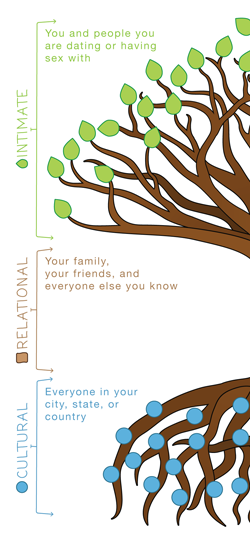 We talk about sexuality as something that affects us on intimate (you, and the people you’re romantic or sexual with), relational (your family, your friends, and everyone else you know personally), and cultural (everyone in your city, state, or country) levels. It’s helpful to have a bit more perspective on these different levels before we talk about how the elements fit into them.
We talk about sexuality as something that affects us on intimate (you, and the people you’re romantic or sexual with), relational (your family, your friends, and everyone else you know personally), and cultural (everyone in your city, state, or country) levels. It’s helpful to have a bit more perspective on these different levels before we talk about how the elements fit into them.
Intimate Sexuality
This is you, your lived experience, your wants, your fears, your behaviors, dispositions, attractions, and preconceptions — all of that and more, and the ways you (or any individual) experiences those things individually, and/or with romantic and/or sexual partners.
A lot of and/or-ing there, I know, which is important: there is no minimum level of intimate sexual experience necessary to qualify one as having a legitimate sexuality. For some people, intimate sexuality may only be an experience they have minimally, or individually; for others, this may be with a partner or partners, and the experience may be romantic, sexual, emotional, spiritual, or more. And while I say there’s no minimum, I’d say there’s no maximum either… but there are only so many hours in a day, days in a year, and years in your life — which brings me to my next point.
What comprises one’s experience of intimate sexuality is constantly changing.(Like the leaves on a tree? Yes! Just like the leaves on a tree.)
Relational Sexuality
This is how sexuality is related to a person by the people in their lives: their family, their friends, their teachers, their preachers… everyone who has a direct impact on someone, has an impact on their relational sexuality.
The people in our lives shape how we see ourselves, how we make sense of our intimate experiences, and how we place judgment on different elements of sexuality. Or, and perhaps most importantly, the people in our lives contribute to our internal definition of what sexuality even is — what elements of life are allowed to be, or can be healthily considered as sexuality.
Like the trunk of a tree, our relational sexuality supports the branches and leaves of our intimate experiences. It’s formed early, and while it grows and changes, it does so slowly and stubbornly — though sometimes we lose a branch, or gain a new etching.
Cultural Sexuality
This is how your world defines, discusses, and differently values elements of sexuality. It’s laws and doctrines, religious texts and influential literature. The media we consume, as well as the media that’s allowed to be produced for our consumption.
Cultural sexuality is often as invisible as it is important: it’s presented as “just the way things are.” But cultural sexuality is anything but objective. It’s created, reinforced, and recreated by the social communities we participate in — from the smaller scale like a town or a state, to the bigger of nation state or major religion.
It influences is from underneath the ground, providing the structure upon which our relational sexuality grows, and the nutrients that grow our branches and leaves (in healthy manifestations), and the rot that works to devour us from our core.
And the three are mutually dependent upon one another
Think again of the analogy of a tree. The roots absorb water, but the leaves absorb sunlight. And, in connecting the two, the trunk provides the support the leaves need to find sunlight, while channeling water from the roots to the leaves so they can combine it with the sunlight to create energy (a process many of us learned about as kids: photosynthesis).
In a similar concept to photosynthesis, in a healthy experience of sexuality an element from our cultural sexuality complements something we experience intimately, and the connection of those elements is supported through our relationships. There’s a connection, and a harmony. We could call this sexualsynthesis (but maybe we won’t, because we’ve already pushed this analogy too far).
On the other hand, the information one receives from cultural sexuality may conflict with what they’re experiencing relationally, or one’s relational sexuality might create discord with what they’ve experienced intimately. For example, a person might be told (relationally or culturally) something they want is harmful; or something that they don’t want is healthy or necessary.
And beyond the healthy vs. unhealthy outcomes of the different ways these three levels of sexuality frame the elements we experience, there’s the simple reality that (as long as you’re living around other people, as members of a society) all three of these levels are, on some level, unavoidable in one’s experience of sexuality.
(Ya know, like how a tree needs roots, a trunk, and leaves.)
The Many (Many, Many) Elements of Sexuality
Let’s get this out of the way: sexuality is about more than just doin’ it. (like how gender is about more than just penises and vaginas)
There are tons and tons of elements that make up what we understand to be our sexuality. Things like (alphabetically) Abortion, Abstinence, Access to Healthcare, Age, Anatomy, Body Image, Caring, Communication, Consent, Contraception, Disability, Education, Family, Fantasy, Fashion, Fetish, Gender, Healthcare System, Intercourse, Laws, Liking, Loving, Masturbation, Media, Medical Theory, Oral Sex, Physiology, Pornography, Psychological Theory, Puberty, Race, Rape, Religion, Reproduction, Risk Taking, Sex Toys, Sexual Anatomy, Sexual Orientation, Sexual Response System, Sharing, Skin Hunger, STI Prevention, STIs, Technology, and Vulnerability (just to name 45).
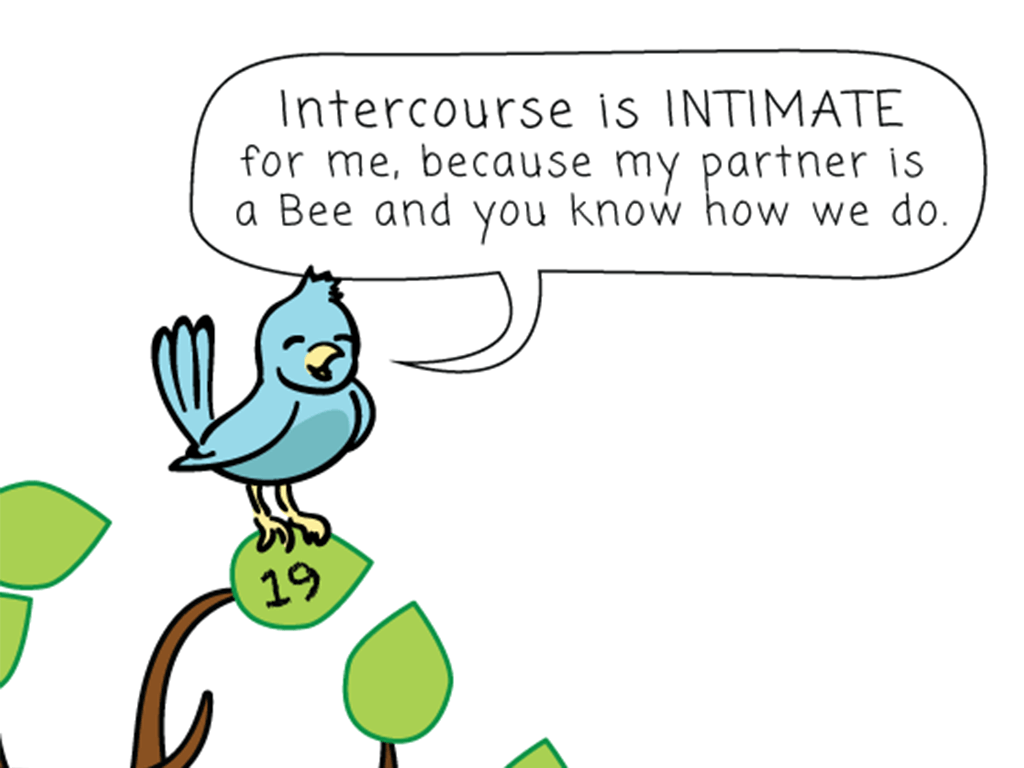 That’s just the start of the list, really (which is why we include blanks on the graphic). Sexuality is all of that and more. And those elements, all 45+, affect us all on different levels.
That’s just the start of the list, really (which is why we include blanks on the graphic). Sexuality is all of that and more. And those elements, all 45+, affect us all on different levels.
We experience different elements on different levels
For example, starting at the top of the list, for some people abortion may be an intimate experience (something they, or their partner[s], have experienced); whereas for others it might be relational (“I know someone who’s had an abortion.”), or just cultural (all of the not-quite-ignorable media messaging, religious messaging, and legal sanctioning surrounding the idea). And for some people it will be all three.
And differently at different times
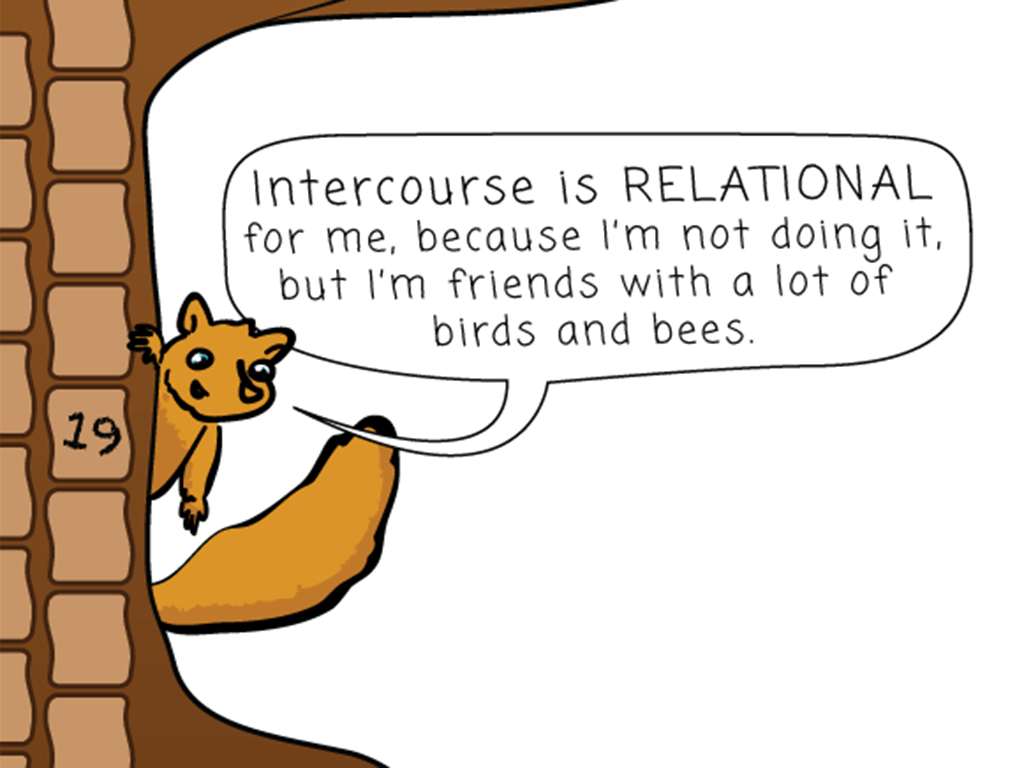 Elements that were previously invisible to us may appear on one level of our sexuality at some point in our life. For a lot straight people in the United States, the legalization of same-sex marriage brought their sexual orientation to the forefront of their sexuality for the first time in their life (Because, as many of us know, one of the privileges of being straight is not thinking of yourself as straight).
Elements that were previously invisible to us may appear on one level of our sexuality at some point in our life. For a lot straight people in the United States, the legalization of same-sex marriage brought their sexual orientation to the forefront of their sexuality for the first time in their life (Because, as many of us know, one of the privileges of being straight is not thinking of yourself as straight).
And how we experience the element may matter as much as the element itself
If something is experienced only at the cultural level, we are likely to have different views of it, opinions on whether it’s “good,” “bad,” or otherwise, compared to if we experience it intimately.
For example, contraception in theory (“Condoms should be available in all schools!”) is different from contraception _in practice _(“Wait, you want _me _to bring the condoms to the schools? Do I have to make eye contact?”). The way we experience an element culturally versus how we experience it intimately may be a wider gap than how we experience one element from another. And sometimes folks are surprised by how they, or others, experience an element intimately (“Hell yeah I’ll bring condoms to schools. Call me _Johnnies __Appleseed _I’ll be tossing ’em out while I skip through the halls.”).
Add the Elements to the Levels, and You Get Your Sexuality
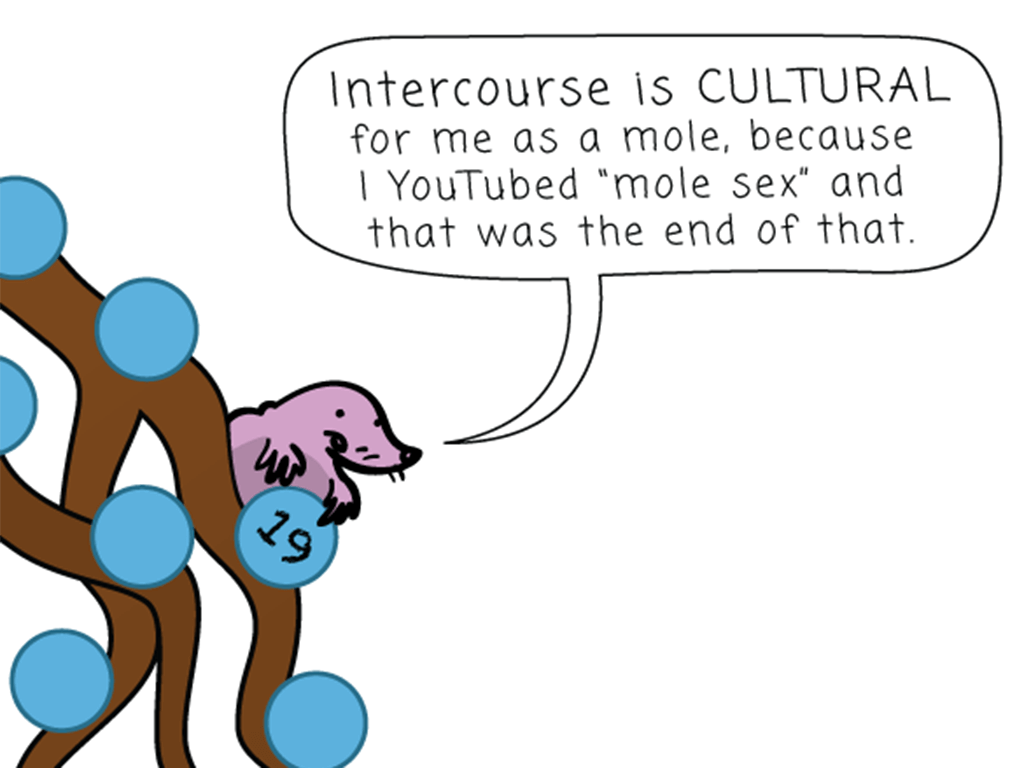 It’s that simple! And also it isn’t.
It’s that simple! And also it isn’t.
In the beginning, I mentioned that sexuality is something we experience personally (as in we take it personally), individually (different people take it personally, differently), and uniquely (indeed, no two people experience it the same).
Well, the barriers that lead to unhealthy sexualsynthesis (we _all _knew I was going to bring it back up) are often one and the same that prevent us from talking honestly, openly, and without shame about sexuality in general. They’re barriers that come from how personal sexuality is, how individual it is, and how uniquely we all experience it. And unless we can talk about it, there’s no chance we’re going to understand it.
So hopefully the Sexualitree helps you talk about it. It’s yours to plant, nurture, and grow.
If you want to print, project, or use the model to teach, we have free resources available for you at Sexualitree.org Download Sexualitree .PDF
